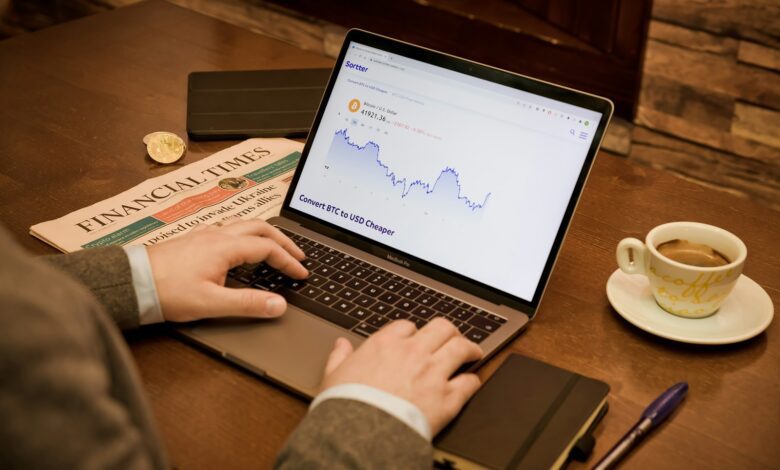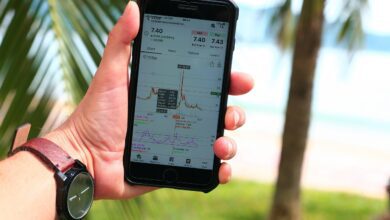Water investing – scarcity-driven investment themes

Targeting sectors focused on conservation and efficient resource management delivers measurable returns amid tightening global supply. Utilities specializing in sustainable distribution systems demonstrate resilience, supported by regulatory incentives aimed at reducing waste and enhancing infrastructure durability.
Technological advancements such as smart metering, advanced filtration, and desalination are reshaping capital flows by improving access and quality while minimizing environmental impact. Firms integrating these innovations often outperform peers by addressing critical shortages through scalable solutions.
Global demographic shifts and climate variability intensify pressure on freshwater reserves, prompting strategic allocation toward companies that prioritize adaptive management practices. Investors benefit from aligning portfolios with entities driving circular usage models, leak detection software, and data analytics to optimize consumption patterns.
Water Investing: Scarcity-Driven Investment Themes [Investment Insights investment-insights]
Allocating capital towards utilities focused on liquid resource management offers a strategic pathway amidst tightening supply constraints. Firms deploying advanced filtration and desalination technologies demonstrate robust growth potential, driven by increasing global demand and regulatory pressures to enhance conservation efforts. Incorporating such assets within diversified portfolios aligns with long-term value creation underpinned by resource scarcity dynamics.
Urbanization trends combined with climate-induced variability intensify stress on existing infrastructure, emphasizing the urgency for innovation in water treatment and distribution systems. Blockchain-enabled platforms that facilitate transparent tracking of consumption and trading of water rights emerge as transformative solutions, promoting efficiency and accountability across complex supply chains.
Technological Innovation as a Catalyst for Resource Optimization
Emerging technological applications including IoT sensors integrated with AI analytics optimize utility networks by enabling real-time monitoring of leaks and consumption patterns. For example, smart metering initiatives in California have reduced non-revenue water losses by approximately 15%, directly enhancing asset utilization metrics. Such operational improvements translate into increased cash flow stability for stakeholders involved in this sector.
Investment vehicles targeting companies developing membrane technology for seawater desalination illustrate compelling prospects amid shrinking freshwater reserves. According to data from the International Desalination Association, global desalination capacity surpassed 100 million cubic meters per day in 2023, reflecting a compound annual growth rate near 9%. This trajectory signals expanding opportunities for capital deployment aligned with sustainable yield objectives.
Regulatory Frameworks Driving Market Entry and Capital Flows
Government policies worldwide increasingly mandate stringent standards on water usage efficiency and wastewater discharge quality. The European Union’s Water Framework Directive exemplifies regulatory influence reshaping utility operations toward circular economy principles. Consequently, firms compliant with these norms typically exhibit enhanced resilience against operational risks linked to scarcity-related disruptions.
An illustrative case involves Singapore’s NEWater initiative, which employs advanced membrane technologies combined with ultraviolet disinfection to recycle wastewater extensively, contributing nearly 40% of the city-state’s potable needs. This model underscores how regulatory incentives coupled with technological adoption can catalyze scalable solutions worthy of investor consideration.
Financial Instruments Leveraging Resource Scarcity
Capital markets have responded by introducing thematic exchange-traded funds (ETFs) and green bonds dedicated to companies specializing in conservation technologies and infrastructure upgrades. For instance, the Invesco Water Resources ETF (PHO) has outperformed broader indices over recent years due to concentrated exposure to entities engaged in efficient distribution systems and innovative treatment processes.
Securitization of future cash flows derived from sustainable water projects provides additional avenues for risk-adjusted returns while aligning investor interests with environmental stewardship goals. Integration of blockchain-based smart contracts further enhances transparency concerning fund allocation and impact verification within these financial products.
Comparative Analysis of Regional Investment Opportunities
- North America: Focus on replacement of aging infrastructure incorporating digitized network controls; substantial public-private partnership funding available.
- Middle East & North Africa: Heavy investment in large-scale desalination plants supported by sovereign wealth funds; integration of renewable energy sources reduces operational costs.
- Asia-Pacific: Rapid urban expansion driving demand for decentralized treatment facilities; government subsidies incentivize adoption of cutting-edge purification technology.
Differentiating regional dynamics is critical when allocating capital effectively within this domain. Understanding localized consumption trends alongside socio-political factors enables precise calibration of portfolio exposures consistent with evolving supply-demand imbalances.
The Role of Data Analytics and Blockchain in Enhancing Asset Management
The implementation of distributed ledger technology facilitates secure sharing of transactional data among utilities, regulators, and consumers without centralized intermediaries. This decentralization supports improved governance structures essential under conditions where resource allocation must reflect equitable usage prioritization amid scarcity pressures.
This convergence between physical asset management and digital oversight forms a foundation for resilient infrastructure investments capable of mitigating supply scarcity challenges while fostering sustainable economic outcomes globally.
Identifying Scarcity Hotspots in Global Hydration Resources
Targeting regions where freshwater access is critically limited requires precise data integration from utilities, climate models, and consumption metrics. Areas such as the Middle East, parts of Sub-Saharan Africa, and Western United States exhibit chronic deficits due to overextraction, population pressures, and inefficient infrastructure. Deploying advanced remote sensing technologies alongside ground-level monitoring enables detection of aquifer depletion rates and seasonal variability with high temporal resolution.
Assessment frameworks benefit from combining satellite imagery with smart metering data collected by urban water providers. This fusion highlights urban-rural disparities in supply reliability and identifies leakage hotspots within distribution networks. Conservation-driven strategies must prioritize these zones for resource optimization while ensuring equitable allocation under shifting climatic conditions.
Technological Integration for Resource Stress Mapping
Innovations in blockchain facilitate transparent tracking of water rights and usage quotas across jurisdictions, reducing disputes that exacerbate scarcity conditions. Utilities leveraging distributed ledger technology can automate compliance reporting and incentivize sustainable consumption through tokenized reward systems. Such implementations have shown promise in pilot projects across Australia and California.
The incorporation of IoT-enabled sensors permits real-time quality assessment critical to safeguarding potable standards amidst dwindling supplies. Data analytics platforms employing machine learning algorithms detect anomalies indicating contamination or unauthorized withdrawals, enabling swift intervention by authorities responsible for resource stewardship.
- Case Study: The Aral Sea basin utilizes integrated hydrological modeling combined with satellite data to predict drought impact on agricultural water demands, guiding policy adjustments on irrigation schedules.
- Example: Singapore’s NEWater initiative exemplifies technology-driven reclamation efforts that mitigate stress on natural reserves by recycling treated wastewater for industrial use.
Macro-level evaluations rely on indices measuring physical scarcity–such as per capita availability below 1,000 cubic meters annually–and economic scarcity indicated by inadequate infrastructure investment or governance challenges. These indicators direct capital flows into conservation technologies like precision irrigation systems and demand management platforms designed to enhance efficiency without compromising growth trajectories.
The nexus between financial flows and technological deployment determines the effectiveness of mitigation efforts in scarcity-prone territories. Strategic allocation towards modular treatment facilities and cloud-based resource management systems empowers utilities to optimize operational costs while enhancing resilience against supply shocks. Investors focused on sustainability increasingly prioritize projects demonstrating measurable improvements in conservation outcomes supported by rigorous data validation protocols.
An integrated approach encompassing ecological parameters alongside socio-economic factors ensures comprehensive identification of vulnerability hotspots globally. Continuous refinement of predictive models aligned with regulatory reforms fosters proactive adaptation pathways essential for securing long-term access to clean liquid assets amid intensifying environmental constraints.
Technologies Reducing Water Consumption
The adoption of advanced irrigation systems, such as drip and precision irrigation technologies, significantly decreases liquid usage in agriculture by delivering targeted hydration directly to plant roots. These systems integrate sensors and automated controls that adjust flow rates based on real-time soil moisture and climatic data, achieving reductions in consumption up to 40% compared to conventional methods. Leading agritech companies have demonstrated how this approach aligns with conservation priorities while enhancing crop yields, presenting a compelling case for strategic capital allocation towards resource-efficient farming solutions.
Industrial sectors are increasingly implementing closed-loop recycling processes that minimize freshwater withdrawal through the reuse of treated effluents. Membrane filtration techniques–such as reverse osmosis and nanofiltration–enable high recovery rates, often exceeding 85%, by removing contaminants and allowing recirculation within manufacturing cycles. This shift toward circular utilization supports operational resilience amid tightening regulatory frameworks governing resource management globally.
Emerging Innovations and Market Implications
Smart metering combined with blockchain-enabled transparency is transforming consumption monitoring across municipal networks. By providing immutable records of volumetric data, these distributed ledger applications facilitate efficient leak detection and incentivize responsible usage through dynamic tariff models. Pilot projects in several metropolitan regions report potential decreases in non-revenue water losses by over 20%, underscoring investment potential in infrastructure digitization aligned with sustainability mandates.
Biotechnological advancements also contribute to demand reduction through the development of drought-resistant crop varieties engineered via CRISPR gene-editing tools. Trials indicate these cultivars require up to 30% less hydration without compromising productivity, offering scalable solutions for arid environments facing escalating scarcity pressures. Integrating such innovations into broader resource stewardship strategies presents an opportunity for diversified portfolio exposure within environmental technology sectors responding to global supply constraints.
Investing in Water Infrastructure Upgrades
Allocating capital to modernize and expand water systems addresses critical challenges posed by aging assets and increasing demand. Utilities worldwide face mounting pressure from leakage rates that often exceed 20%, translating into billions of gallons lost daily. Prioritizing upgrades such as smart metering, pipe replacement, and advanced treatment technologies enhances operational resilience while reducing resource waste.
Advanced technology integration plays a pivotal role in transforming traditional networks into intelligent ecosystems. For example, the deployment of IoT sensors enables real-time monitoring of pressure fluctuations and pipeline integrity, facilitating predictive maintenance and minimizing outages. Such innovations improve efficiency metrics substantially; in Singapore, the implementation of a nationwide smart water grid reduced non-revenue water by over 5% within two years.
Technical Drivers Behind Capital Allocation
Global utilities confront escalating scarcity pressures due to population growth and climate variability impacting freshwater availability. Upgrading infrastructure with energy-efficient pumps, membrane filtration, and automated control systems mitigates these constraints by optimizing resource distribution. Additionally, adopting decentralized solutions like modular treatment plants supports localized conservation efforts while enhancing system flexibility.
A detailed case study from California illustrates how layered investments in reservoir management software combined with leak detection drones resulted in a 15% improvement in water retention across affected districts. These targeted expenditures not only extend asset lifespan but also align with regulatory mandates on sustainability and emissions reduction, creating favorable conditions for long-term value generation.
- Leakage control: Employing acoustic sensors to identify micro-leaks before escalation
- Energy optimization: Integrating variable frequency drives reduces consumption by up to 30%
- Smart metering: Enhances customer engagement through usage transparency
The emerging emphasis on conservation necessitates collaboration between public agencies and private sector financiers. Financial instruments such as green bonds are increasingly directed toward projects demonstrating measurable environmental benefits alongside economic returns. This dual-focus approach enhances portfolio diversification while addressing systemic vulnerabilities linked to resource scarcity.
Forecasting models predict that regions investing strategically in infrastructure modernization will experience reduced volatility in supply reliability and cost structures compared to peers reliant on legacy systems. Incorporation of blockchain-based tracking for asset performance data further increases transparency, enabling more precise risk assessment and accountability throughout the value chain.
Water rights and regulatory impacts
Prioritizing secure allocation of water entitlements remains critical amid intensifying global scarcity pressures. Jurisdictional frameworks that govern access vary widely, influencing market liquidity and risk profiles for stakeholders focused on preservation-oriented financial ventures. Detailed analysis of regional policies reveals how evolving compliance mandates affect the valuation of usage permits and long-term operational viability.
Technological integration plays a pivotal role in enhancing transparency and traceability within rights management systems. Blockchain applications, for example, enable immutable recording of transactions involving resource allocations, reducing disputes and facilitating secondary market exchanges. This innovation aligns with broader conservation objectives by promoting efficient distribution aligned with actual consumption patterns.
Regulatory structures shaping asset dynamics
In arid zones such as California’s Central Valley or Australia’s Murray-Darling Basin, regulatory bodies impose strict caps on extraction volumes tied to environmental sustainability targets. These measures directly impact capital flows by creating scarcity premiums on tradable permits. Financial instruments linked to these rights must incorporate scenario analyses accounting for policy shifts triggered by climate forecasts or judicial rulings.
Furthermore, transboundary governance introduces complexity as upstream-downstream relationships necessitate cooperative agreements to prevent overexploitation. International examples include the Nile Basin Initiative, where multi-state protocols attempt to balance developmental goals against ecological constraints. Understanding these geopolitical nuances is indispensable when evaluating portfolio diversification strategies related to liquid asset classes derived from hydric resources.
Emerging data-driven monitoring tools contribute significantly to enforcement efficacy by delivering real-time insights into consumption trends versus permitted thresholds. Smart metering combined with AI algorithms can predict unauthorized withdrawals or leaks, enabling proactive regulatory interventions. Capital allocations directed toward entities adopting such advanced systems tend to demonstrate reduced compliance costs and enhanced resilience against reputational risks associated with mismanagement.
Conclusion
Corporations must prioritize integrating advanced technological solutions and data-driven analytics into their resource risk frameworks to mitigate exposure on a global scale. Leveraging smart metering, AI-powered predictive models, and blockchain-enabled transparency within utilities networks enables precise monitoring and optimized allocation, directly addressing supply constraints and operational inefficiencies.
Strategic conservation protocols combined with adaptive infrastructure investments form the backbone of resilient approaches to diminishing availability challenges. Enterprises aligning capital towards decentralized water purification systems, real-time leakage detection platforms, and circular reuse technologies position themselves to capture substantial value amid tightening regulatory environments and shifting consumer expectations.
Forward-Looking Implications
- Regulatory evolution: Heightened compliance demands will drive increased adoption of automated reporting via distributed ledger technologies ensuring verifiable provenance and usage accountability.
- Cross-sector collaboration: Partnerships between industrial actors and utility providers facilitated by interoperable IoT ecosystems will unlock efficiencies unattainable through isolated efforts.
- Financial innovation: Emerging green bonds and sustainability-linked credit facilities tied to measurable conservation outcomes are reshaping capital flows towards resource-sensitive projects.
- Market differentiation: Corporates demonstrating robust stewardship through transparent environmental metrics gain competitive advantage in both equity markets and consumer trust indices.
The convergence of these trends underscores a paradigm shift where managing finite liquid assets transcends mere compliance, becoming an integral dimension of corporate valuation. Entities adopting forward-compatible technology stacks combined with proactive operational strategies are poised to navigate scarcity pressures effectively while unlocking new avenues for sustainable growth.






